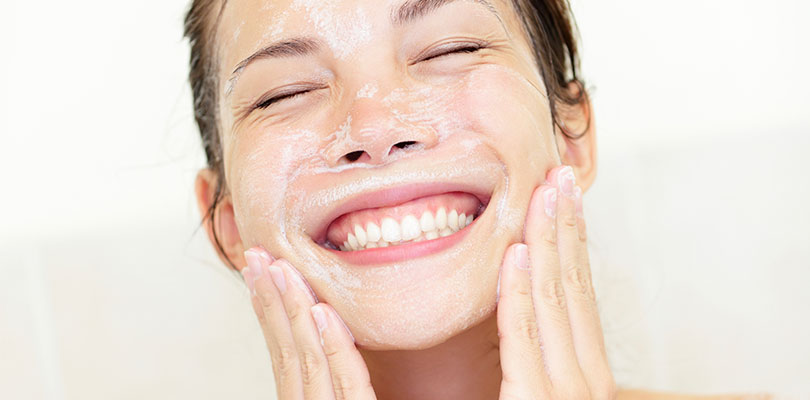Breathing Exercises for Anxiety
Everyone gets anxious on occasion. For people that have respiratory diseases, such as COPD or asthma, feelings of anxiety are extremely common.
Shortness of breath and anxiety often go hand in hand. When you feel as if you can’t get enough air in, it may lead to panic.
As you panic, your breaths become more shallow and shorter, which increases your breathlessness and the cycle continues. Anxiety may also develop if you fear becoming short of breath or worry about how your disease may progress.
Anxiety breathing symptoms often cause breathlessness. Additional symptoms may include:
- Fast breathing
- Increased heart rate
- Dizziness
- Chest pain
The good news is you can ease anxiety by doing certain breathing exercises. The exercises help decrease anxiety, reduce shortness of breath, and ease the panic. By performing breathing exercises, you can control anxiety and not allow it to control you.
Below are several breathing exercises to try for anxiety.
Pursed Lip Breathing
One of the most common forms of deep breathing exercises for anxiety is pursed-lip breathing.
Pursed-lip breathing helps you slow your breaths and completely exhale carbon dioxide. It can be done to prevent panic and stop anxiety after it has started.
- To perform pursed-lip breathing, sit up straight in a chair and inhale deeply and slowly through your nose for a count of about three or four.
- Exhale slowly through pursed lips for a count of six or seven. It’s important to exhale for about twice as long as you inhale.
- To purse your lips, blow out as if you are going to whistle or blow out a candle.
- Repeat for several breaths or until you feel relaxed.
Diaphragmatic Breathing
Another very common form of breathing for anxiety is diaphragmatic breathing, which is also called belly breathing. Although babies often breath using their belly, adults tend to use mostly their chest when they inhale and exhale.
If performed regularly, diaphragmatic breathing can improve the tone of the diaphragm. It also helps you control your breathing and decrease anxiety or tension.
It’s easiest to learn diaphragmatic breathing if you are laying down, but it can also be performed sitting on a chair.
- Place one hand on your chest and one on your belly.
- Inhale deeply through your nose as you focus on expanding your abdomen
- Exhale through your mouth slowly.
- As you perform diaphragmatic breathing, you should feel your chest expand slightly during inhalation. But you’ll feel most of the expansion in your belly. This forces the diaphragm to move downward, which allows for full lung expansion.
- Diaphragmatic breathing can be performed at the same time as pursed-lip breathing. Do several breaths at bedtime to help you relax.
Whether your goal is to lose weight or train for a specific event, there are many reasons why you should consider getting a fitness tracker.
Three by Three Deep Breathing
One of the most straightforward deep breathing exercises for anxiety is the three by three method.
- Sit in a comfortable position on a chair or laying in bed.
- Close your eyes and relax your shoulders.
- Inhale through your nose for three seconds.
- Exhale through your mouth for three seconds.
4-7-8 Deep Breathing
The 4-7-8 breathing exercise for anxiety is similar to the three by three method. The difference is you perform a breath hold in between inhalation and exhalation.
The 4-7-8 breathing exercise forces you to focus on your breathing, which helps you gain breath control.
- Sit up straight with your back against a chair and your hands on your lap.
- Inhale through your nose for a count of four.
- Hold the breath for seven seconds.
- Exhale for about eight seconds.
- Repeat three or four times when you start to feel anxious.
- If you cannot hold your breath for seven seconds without becoming short of breath, hold for whatever you can tolerate.
Nostril Breathing
Nostril breathing is a relaxing deep breathing exercise often used in yoga. It has a calming effect on the mind and body. Nostril breathing can improve focus and breath control while it reduces anxiety.
- Sit on a chair or the floor with your legs in a comfortable position.
- Hold one nostril closed with your pointer finger while inhaling deeply through the open nostril for three seconds.
- Block the opposite nostril and exhale for five or six seconds through the open nostril.
Benefits of Breathing Exercises for Anxiety
Anxiety is extremely widespread. According to the National Alliance on Mental Illness, about 18 percent of adults in the United States have experienced some form of anxiety. People who have chronic respiratory conditions, such as COPD and asthma, often experience at least occasional anxiety related to their breathing.
Breathing exercises are a great natural way to decrease anxiety. The exercises are easy to learn and can be done anywhere.
They also often facilitate expelling carbon dioxide out of the lungs, which is especially helpful for people with COPD who might develop air trapping.
If you start to become lightheaded while performing deep breathing exercises, stop and rest. When dizziness subsides, you can continue.






